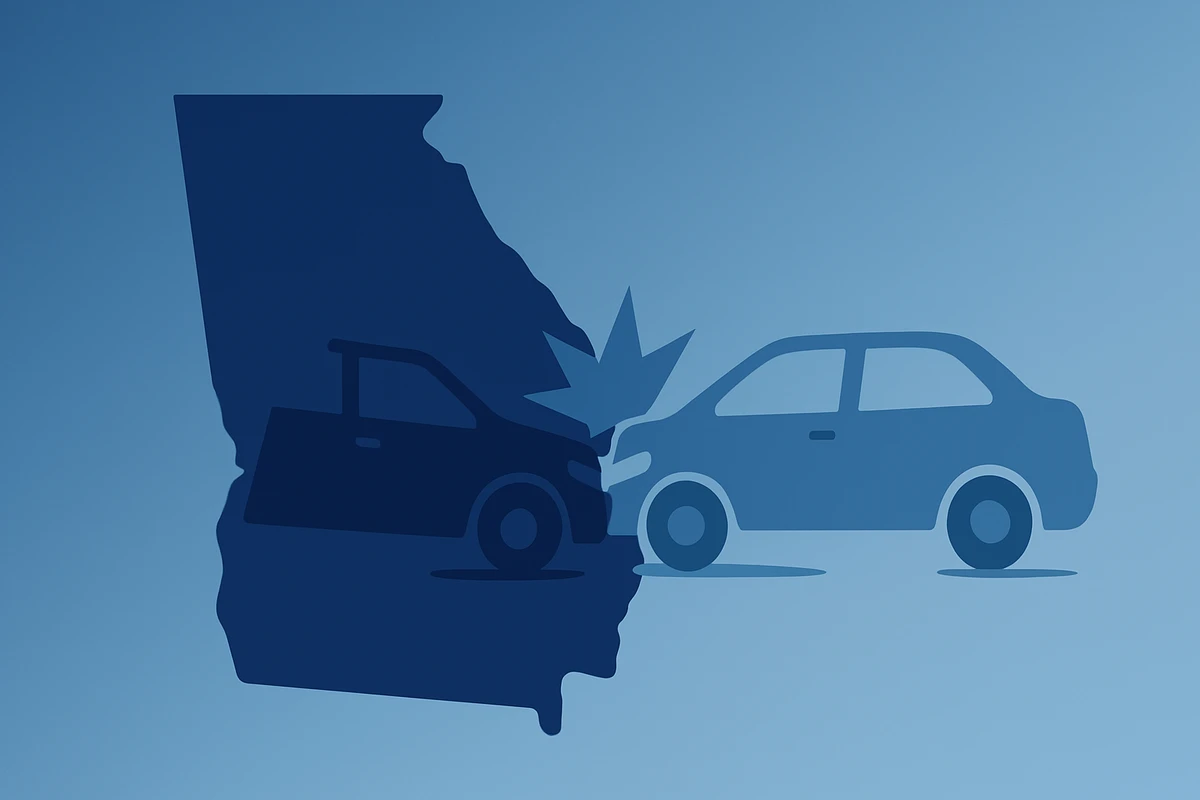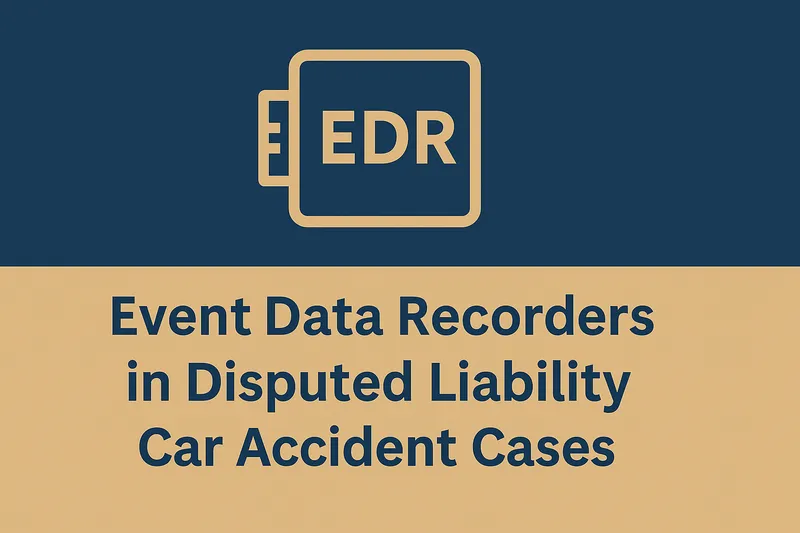Georgia’s At-Fault Auto Insurance System

Published: 3/29/2025
Georgia is an “at-fault” state for auto insurance. This means that after a car accident in Georgia, the driver who is found to be responsible (at fault) for causing the crash is financially liable for the damages. In practice, the at-fault driver’s insurance will pay for the other party’s medical bills, vehicle repairs, and other losses
What Does It Mean to Be an At-Fault State?
In an at-fault (tort liability) state, the insurance system is built on determining who caused the accident. The at-fault driver’s liability insurance is responsible for covering the other parties’ injury costs (through bodily injury liability coverage) and property damage (through property damage liability coverage). If you are injured by another driver in Georgia, you have the right to seek full compensation from the at-fault driver – including medical expenses, lost wages, and even pain and suffering. There are no special limitations on lawsuits in at-fault states; an injured victim can sue the at-fault driver for damages if needed, without having to meet a statutory injury threshold.
By contrast, in a no-fault state, drivers must carry a type of coverage called “Personal Injury Protection” (PIP). After a crash, each driver turns to their own PIP insurance to pay for their medical bills and lost income, no matter who was responsible for the collision. Minor injury claims are handled within one’s own policy, which reduces the need for lawsuits over every fender-bender. However, no-fault systems limit the right to sue: an injured person can only step outside the no-fault system and sue the other driver if their injuries are severe or costs exceed certain thresholds (for example, cases of permanent injury or very high medical bills). In no-fault states, compensation for pain and suffering is generally unavailable unless the case meets those serious injury thresholds.
In summary, the key distinction is who pays for injuries after a crash:
-
In Georgia’s at-fault system, the at-fault party (through their insurance) pays for others’ damages. The victim can file a claim against the at-fault driver’s insurer and, if necessary, file a lawsuit for any unpaid losses.
-
In no-fault systems like Florida’s and Michigan’s, each driver’s own PIP coverage pays for their own injury costs up to the policy limit, regardless of fault. Only if injuries are serious can the victim pursue a claim against the at-fault driver for additional damages.
How Auto Insurance Claims Work in Georgia (At-Fault)
Georgia follows a traditional fault-based insurance process, which gives an accident victim three possible avenues to recover compensation after a crash=:
-
File a claim with your own insurer, who will then seek reimbursement from the at-fault driver’s insurance (this is called subrogation).
-
File a claim directly with the at-fault driver’s insurance company (a third-party claim under the at-fault driver’s liability policy).
-
File a personal injury lawsuit against the at-fault driver in civil court.
In all cases, a determination of fault is critical. Investigations (police reports, witness statements, etc.) will establish who was responsible for the accident. Once fault is confirmed, the at-fault driver’s liability insurance is expected to cover the other party’s medical costs, vehicle repairs, and other losses up to the coverage limits.
Georgia state law requires drivers to carry liability insurance (with minimum limits, for example, $25,000 per person for bodily injury) to ensure that funds are available to pay victims in the event the driver is at fault. One important aspect of Georgia’s system is its rule on comparative negligence. If both drivers share some blame for the accident, Georgia uses a modified comparative fault rule to allocate damages.
In simple terms, you can still recover compensation if you were partially at fault, as long as you were less at fault than the other driver. However, your compensation will be reduced by your percentage of fault. For example, if Driver A is 20% at fault and Driver B is 80% at fault, Driver A can recover 80% of their damages from B’s insurer (if Driver A had $10,000 in losses, they’d receive $8,000, which is $10,000 minus the 20% that was their own fault). If a person is 50% or more at fault in Georgia, they would be barred from recovering damages from the other party. This rule ensures that in Georgia’s at-fault system, liability is assigned proportionally and only predominantly innocent parties can collect damages from others.
Bottom line for Georgia drivers
If you’re in an accident caused by someone else, their insurance should pay for your damages. You might deal with your own insurer initially (especially for fast claims processing), but ultimately the costs are passed to the at-fault driver’s insurer. If the at-fault party’s insurance is insufficient or denies liability, you have the right to take the matter to court to recover the full extent of your losses. By not having a no-fault law, Georgia allows accident victims to pursue the at-fault driver for all damages, including pain and suffering, without special restrictions.
Real-World Implications for Drivers
For a Georgia driver, being in an at-fault state means you should always exchange insurance information and document the scene thoroughly if you’re in an accident, since fault will determine whose insurance pays. If you’re injured by another driver, you may need to prove that driver’s fault to get compensated, which can be a complex process. It also means you might consider carrying optional protections like Medical Payments coverage (to cover your own injuries regardless of fault) or Uninsured/Underinsured Motorist coverage (since Georgia has its share of uninsured drivers, and if they hit you, you might otherwise be stuck with bills). These coverages mimic some aspects of no-fault benefits by ensuring your own insurance can help you immediately, even in an at-fault system.
Finally, in terms of costs and benefits: Georgia’s at-fault system may lead to more contentious claims processes, but it avoids mandating additional first-party coverage (keeping premiums a bit lower). For example, Florida and Michigan’s no-fault systems offer a safety net of immediate medical coverage through PIP and reduce small claim legal fights, but drivers pay more in premiums for that peace of mind and give up some legal rights in minor crashes. Each system has its pros and cons – no-fault provides speed and certainty (you know your own injuries are covered no matter what), while at-fault provides the ability to seek complete restitution from a wrongdoer (including pain & suffering) without restrictions.
Georgia being an at-fault state means that fault and liability are at the center of every accident claim.
The driver who causes an accident in Georgia can be held financially responsible for all damages, and injured parties have broad rights to pursue claims against that driver. In no-fault states like Florida and Michigan, the system is designed to have your own insurance take care of you after a crash, which simplifies minor claims but comes with higher insurance costs and limits on litigation for those not-serious accidents. Understanding these differences can help drivers in Georgia and elsewhere make informed decisions about their insurance and know what to expect if they’re ever unfortunate enough to be in a collision in Georgia.
Related Articles



